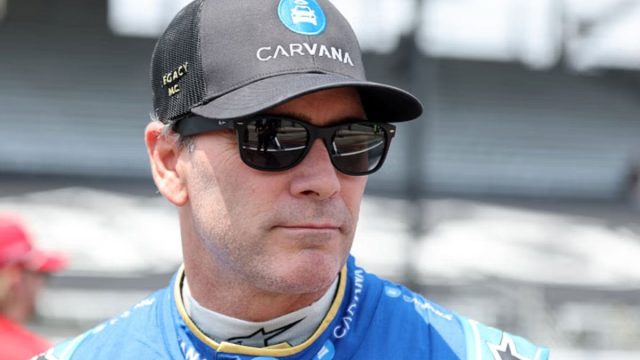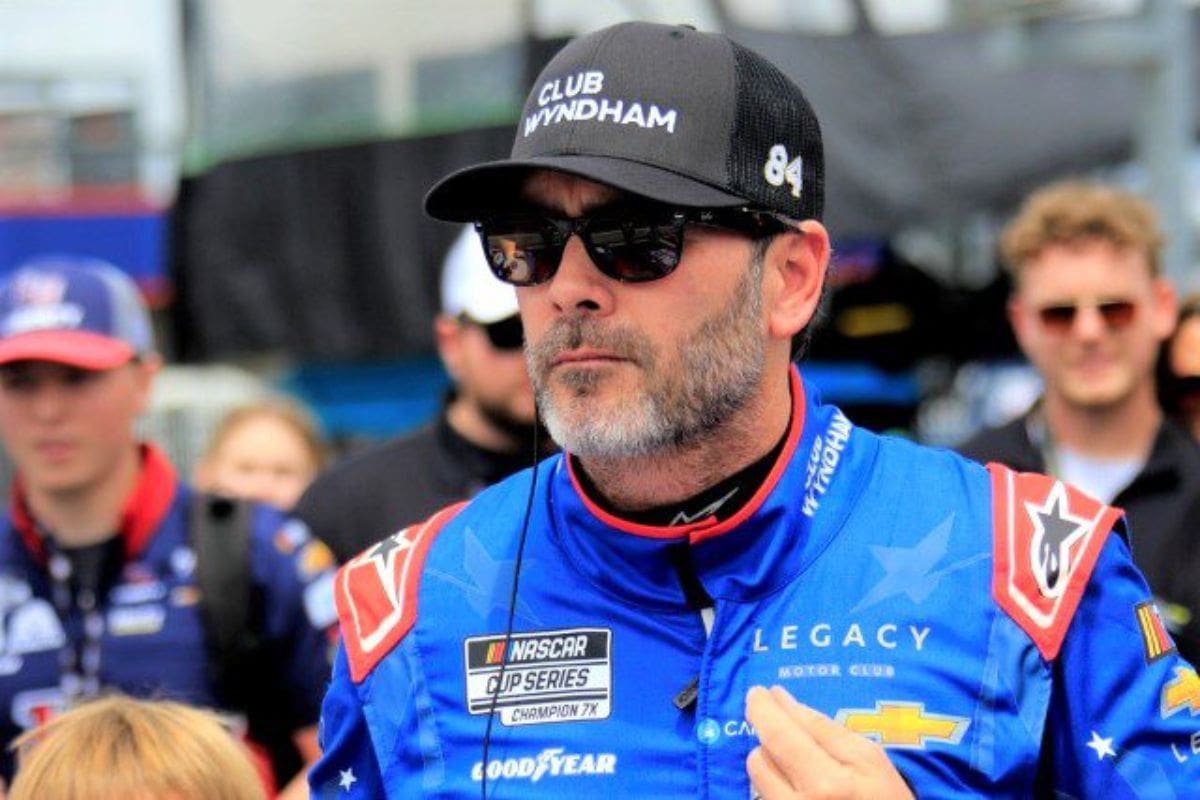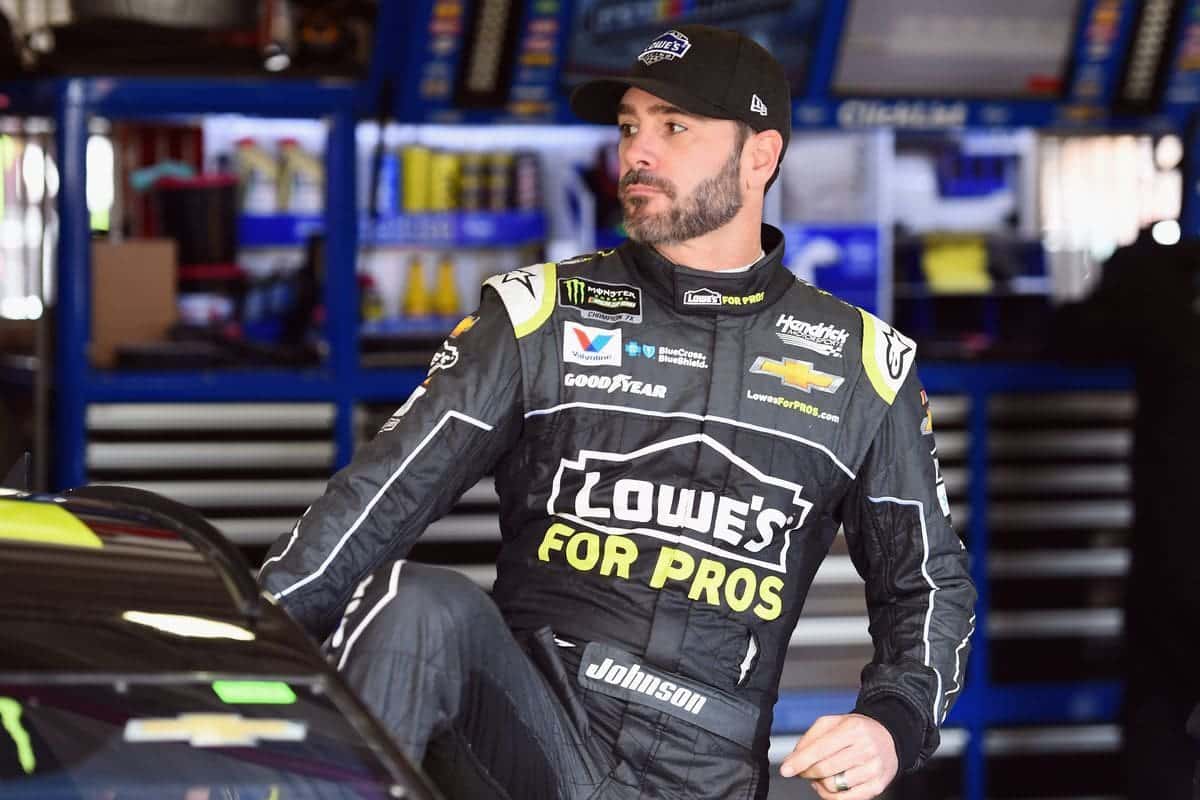Jimmie Johnson’s 10K Dollar Penalty: Two decades ago, Jimmie Johnson‘s $10,000 penalty serves as a example of the complex interplay between personal sponsorships and the corporate interests that dominate NASCAR. By obscuring a rival brand’s product during a celebratory moment, Johnson jeopardized his financial standing and highlighted the nature of brand loyalty in a sport heavily influenced by corporate sponsorships. This incident invites a closer examination of how drivers navigate these tensions and the broader implications for their careers and the sport itself. What does this mean for the future of sponsorship dynamics in NASCAR?
Key Highlights
- Jimmie Johnson’s $10,000 penalty stemmed from obscuring a PowerAde bottle during a celebration, showcasing tensions between personal sponsorships and NASCAR’s corporate partnerships.
- His loyalty to Pepsi conflicted with NASCAR’s Coca-Cola sponsorship, complicating his promotional efforts and leading to financial repercussions.
- The Bottlegate incident highlighted the challenges drivers face in prioritizing personal affiliations over corporate obligations, impacting their image and financial stability.
- Johnson’s actions influenced fellow drivers to adopt similar stances against corporate favoritism, emphasizing the need for awareness of sponsorship dynamics.
Jimmie Johnson and Sponsorship Tensions
Jimmie Johnson’s loyalty to Pepsi amidst NASCAR’s longstanding partnership with Coca-Cola exemplifies the complex interplay between personal branding and corporate sponsorship in the world of motorsports. This loyalty, while admirable, led to considerable tension between Johnson and NASCAR’s official sponsor, Coca-Cola, emphasizing the challenges drivers face in balancing personal affiliations with corporate obligations.
Johnson’s deliberate actions, such as knocking PowerAde bottles off his car during celebratory moments, were not mere acts of rebellion; they were calculated strategies that reflected his commitment to Pepsi. Such gestures, however, did not go unnoticed. NASCAR President Mike Helton’s subsequent directive to prohibit these actions highlights the governing body’s intent to maintain brand integrity and protect its primary sponsorship agreements. Johnson’s attempts to camouflage the rival branding with Lowe’s signage only exacerbated the situation, culminating in a warning and a $10,000 fine.
This incident serves as a case study in the complexities of sponsorship dynamics in NASCAR. It exemplifies how a driver’s personal endorsements can conflict with the overarching interests of the sport, leading to potential disciplinary actions. For Johnson, the fine was not merely a financial penalty; it represented the broader struggle that athletes encounter when managing their roles as brand ambassadors in a field governed by strict corporate partnerships.
Jimmie Johnson: The Driver Who Fought for His Sponsors
Steering through the complex landscape of sponsorship in NASCAR, Johnson emerged as a determined advocate for his personal brand, often challenging the prevailing corporate norms that sought to limit his expression as a driver. His confrontations with NASCAR’s sponsorship policies reveal not only a fierce commitment to his own endorsement deals but also a broader commentary on the intricate relationship between drivers and their sponsors.
Johnson’s notable actions, particularly during the controversial incidents at Pocono Raceway and Lowe’s Motor Speedway, highlight his willingness to prioritize his alliances with brands like Pepsi over the expectations imposed by NASCAR’s corporate sponsors. This defiance, while costly, demonstrated his tactical thinking and the lengths to which he would go to protect his commercial interests.
- Brand Loyalty: Prioritizing personal sponsorships over corporate mandates, exemplified by his actions against PowerAde.
- Tactical Maneuvering: Employing creative tactics to obscure rival branding, reflecting an adept understanding of public relations.
- Risk Management: Acknowledging the financial repercussions of his decisions while weighing them against potential gains.
- Industry Impact: Influencing fellow drivers to adopt similar stances against corporate favoritism, fostering a competitive spirit among peers.
The Bottlegate Incident and Its Aftermath
The Bottlegate incident, indicative of the ongoing tension between driver autonomy and corporate sponsorship in NASCAR, surfaced when Johnson famously obscured a Powerade bottle during his celebration at Pocono Raceway, resulting in a notable $10,000 penalty. This event emphasized the intricate dynamics drivers face as they navigate the demands of personal sponsorship affiliations while adhering to the corporate interests that the sport represents.
“It ended up being an expensive move on my part. The bottom line is that I’m just trying to defend my options as a driver.” – Johnson
In August 2004, the scene in Victory Lane was representative of a broader issue within NASCAR: the expectation for drivers to maintain brand allegiance even in moments of victory. Johnson instinctively shielded the competing Powerade bottle from view, a move that sparked scrutiny from NASCAR officials. This act was not merely an isolated incident but part of a trend where drivers were cautioned to avoid overtly promoting rival brands during celebratory moments, given the heightened awareness of sponsorship conflicts.
“August 1, 2004: In Pocono victory lane, Jimmie Johnson (a Gatorade athlete) blocked a bottle of Powerade on the roof of his car and was fined $10,000.”
“It was part of a trend in ’04 where drivers had to casually remove the Powerade placement when it conflicted with their sponsors.” – fan uploaded a video
Jim Hunter, a prominent NASCAR official at the time, reinforced the organization’s stance by stating that drivers had already been warned about their conduct in Victory Lane. The incident highlights how corporate interests can impose restrictions on personal expression, creating a paradox where drivers, celebrated for their individuality, must conform to sponsorship protocols.
“We’re going to address these situations in an orderly fashion, just as we always have, We expect our drivers to follow this protocol.” – Hunter
Tony Stewart’s Sponsorship Struggles
Steering through the treacherous waters of conflicting sponsorships, Tony Stewart found himself at the intersection of corporate interests and personal obligations, expressing his discontent with the duality of NASCAR’s commercial landscape.
“I think it’s a bad position corporate NASCAR has put us in.”
“We have sponsors that we’re responsible for and have obligations to, and I don’t think it’s fair for anybody to put anything on top of our race cars after we win the race.”- Tony
As a Coca-Cola-sponsored driver, Stewart faced an inherent conflict due to NASCAR’s sponsorship affiliations with both Coca-Cola and its rival, Pepsi. This dichotomy not only complicated his promotional efforts but also raised questions about the integrity of the sport itself.
Stewart’s frustration was palpable as he articulated his discontent with the corporate structure of NASCAR, which often left drivers in precarious positions. He cited several key issues stemming from this sponsorship rivalry:
- Conflicting Obligations: Drivers were expected to promote their own sponsors while maneuvering rival branding on the same tracks.
- Inconsistent Messaging: The presence of Pepsi branding at ISC tracks undermined the message Stewart was meant to convey for Coca-Cola.
- Lack of Fairness: Stewart emphasized the unfairness of promoting one brand while being overshadowed by another, particularly after a race win.
- Corporate Accountability: He called for corporate NASCAR to reconsider how sponsorship deals were structured to protect the interests of the drivers.
Modern Sponsorship Dynamics
As the landscape of NASCAR sponsorship evolves, drivers now navigate a more sophisticated framework that utilizes digital platforms, allowing for improved engagement with sponsors beyond the confines of the racetrack. This shift reflects a broader trend in sports marketing, where traditional methods of promotion are being supplemented—and often replaced—by the dynamic capabilities of social media and online content.
In the contemporary environment, NASCAR teams benefit from a global audience that transcends geographical barriers. Consequently, the obligation for drivers to overtly display sponsorships during races has diminished. Instead, the focus has shifted toward tactical digital engagement, enabling sponsors to capitalize on the drivers’ platforms for targeted outreach. This evolution not only improves brand visibility but fosters deeper connections with fans, who are increasingly engaged in the narrative surrounding their favorite drivers.
However, this new paradigm requires drivers to maintain a careful balance between their racing commitments and sponsorship obligations. The potential for missteps—such as unintended penalties stemming from sponsorship rivalries—highlights the complexities inherent in modern sponsorship dynamics. Drivers must remain vigilant in their interactions, ensuring that their actions resonate positively with both their teams and sponsors.
News in Brief: Jimmie Johnson’s 10K Dollar Penalty
The incident involving Jimmie Johnson serves as a poignant reminder of the intricate and often contentious relationship between drivers and corporate sponsors in NASCAR.
The $10,000 penalty not only highlights the financial risks associated with sponsorship conflicts but also emphasizes the broader implications for brand loyalty and integrity within the sport.
As sponsorship dynamics continue to evolve, the balancing act between personal endorsements and corporate obligations will remain a critical challenge for drivers maneuvering this competitive landscape.
ALSO READ: Jimmie Johnson Struggles After Owning a NASCAR Team: LMC Hits New Low



